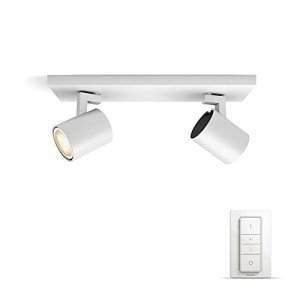10 Easy Ways To Figure Out The Interior Lighting UK In Your Body.
Interior Lighting in the UK: A Comprehensive Guide
Interior lighting plays an essential function in developing an environment, boosting functionality, and revealing personal design within homes and businesses. In the UK, where the weather can be unforeseeable, effective lighting is not just about aesthetic appeals however also about making areas feel warm, welcoming, and practical. This short article digs into different aspects of interior lighting, incorporating types, patterns, pointers, and often asked questions.
Understanding the Importance of Interior Lighting
Lighting is frequently considered the foundation of interior design. It influences state of mind, functionality, and the perceived size of areas. The best lighting can:
- Enhance the architectural functions of a room.
- Emphasize art work and decoration.
- Enhance security and security.
- Influence performance in work areas.
- Produce a comfortable ambiance for relaxation.
Types of Interior Lighting
Reliable lighting design generally incorporates three main types of lighting: ambient, job, and accent.
1. Ambient Lighting
This is the primary source of light in a room, providing overall illumination. Common sources include:
- Ceiling-mounted fixtures
- Chandeliers
- Recessed lighting
- Soft wall sconces
Ambient lighting produces a foundation from which other lighting types can build upon.
2. Job Lighting
Task lighting concentrates on particular areas to help with activities such as reading, cooking, or working. This kind of lighting assists to lower eye stress and can considerably impact functionality. Typical sources consist of:
- Desk lamps
- Under-cabinet lights in kitchens
- Checking out lamps next to beds
- Mounted lights intended at work surfaces
3. Accent Lighting
Accent lighting adds drama and highlights specific items or locations, such as artwork or architectural features. This kind of lighting can create visual interest and depth in a space. Sources consist of:
- Picture lights
- Decorative lamps
- Uplighters
- LED strip lights along shelves
Utilizing a mix of these lighting types can lead to a healthy and multifunctional space.
Popular Lighting Trends in the UK
The interior lighting landscape in the UK continues to develop, affected by design trends, innovation, and customer preferences. Here are some popular trends to view:
Smart Lighting: The introduction of smart technology has changed how individuals handle lighting in their homes. Find Out More and systems like Philips Hue permit users to control brightness and color temperature through their smart devices.
Minimalist Designs: Sleek, basic styles that blend seamlessly with interiors are dominating the marketplace. Pendant lights with fragile frames, LED strips, and geometric shapes are especially fashionable.
Industrial Lighting: This pattern showcases raw, bare products. Metal fixtures and Edison bulbs provide a vintage touch that is both elegant and practical.
Eco-Friendly Options: With increasing awareness of sustainability, many customers are turning to energy-efficient LED alternatives and fixtures made from sustainable products.
Tips for Effective Interior Lighting Design
Designing a reliable lighting plan needs thoughtful consideration of numerous factors. Here are some suggestions:
Consider the Purpose of Each Room: Every space has a various function. Consider what activities will occur and what kind of lighting will support those activities.
Layer Lighting: Employ multiple kinds of lighting within a room to create depth and versatility. Integrate ambient, task, and accent lighting to improve both visual appeals and functionality.
Usage Dimmers: Dimmers permit control over brightness levels, allowing users to adjust lighting according to mood and time of day.
Incorporate Natural Light: Make the many of natural lights like windows. Use light, reflective colors for walls and home furnishings to make the most of brightness.
Think Of Color Temperature: Different color temperature levels (measured in Kelvins) create different atmospheres. Warmer temperatures (around 2700K-3000K) are cozy, while cooler temperatures (4000K+) provide a more clinical or energetic feel.
Interior Lighting Mistakes to Avoid
To develop a well-lit area, it's important to avoid common lighting mistakes. Here are some errors to enjoy for:
Underestimating Wattage: Insufficient wattage can lead to dim, unwelcoming spaces.
Neglecting Scale: Fixtures that are too little for a room can watch out of place, while oversized fixtures can overwhelm a space.
Over-reliance on Ceiling Lights: Relying solely on overhead lighting can develop uninviting shadows; balance with extra lighting types.
Poor Placement: Misplaced lights can produce areas that are too bright or too dark. Strategy placements attentively.
Frequently asked question Section
1. What is the distinction between warm white and cool white light?
Warm white light (2700K to 3000K) develops a comfortable, inviting environment, best for living rooms and bedrooms, while cool white light (4000K to 5000K) is more fit for work spaces as it enhances concentration and clearness.
2. How can I optimize natural light in my home?
To maximize natural light, usage light-colored walls, strategically place mirrors to reflect light, and choose sheer window coverings that permit sunlight to pass through.
3. How do I pick the ideal light?
Think about the size of your area, the style of your decor, and the function of the area. Ensure the scale of fixtures matches the room and matches the total aesthetic.
4. Are LED lights better than traditional bulbs?
Yes, LED lights are more energy-efficient, have a longer life expectancy, and can offer a variety of color temperatures, making them a more sustainable lighting alternative.
5. What should I do if specific areas of my room remain too dark?
Think about adding additional job or accent lighting to lighten up those locations. Floor lamps, wall sconces, or perhaps strategically put table lamps can assist reduce dark areas.
Interior lighting is a necessary aspect of home and organization style throughout the UK. Comprehending the different types, present trends, and best practices can assist residential or commercial property owners in producing spaces that are not only elegant however also functional. With thoughtful factor to consider and preparation, efficient lighting can transform any environment, enhancing both atmosphere and functionality for many years to come.
